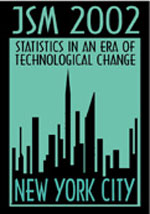|
Activity Number:
|
78
|
|
Type:
|
Contributed
|
|
Date/Time:
|
Monday, August 12, 2002 : 8:30 AM to 10:20 AM
|
|
Sponsor:
|
Business & Economics Statistics Section*
|
| Abstract - #301690 |
|
Title:
|
Application of a Ratio Control Chart to Monitoring Dealer Warranty Claims
|
|
Author(s):
|
Paul Baum*+
|
|
Affiliation(s):
|
California State University, Northridge
|
|
Address:
|
18111 Nordhoff Street, Northridge, California, 91330-8378, USA
|
|
Keywords:
|
warranty claims ; ratio ; control limits
|
|
Abstract:
|
A major problem facing car manufacturers is the monitoring of dealer warranty claims. District service managers are confronted with the daunting task of examining thousands of warranty claims to determine when the dollar cost of a dealer's claim is excessive or when the number of claims exceeds an acceptable range. The definitions "excessive" and "acceptable range" are often arbitrary. An alternative, statistically-based method of monitoring this process is the use of a control chart. One approach is to use two control charts: an X-bar and R chart to monitor the average dollar amount of the claims submitted by a dealer and a c chart to track the number of claims. A more efficient approach is to develop one control chart for the ratio of these two random variables. Ratio control charts are not widely used, mainly due to the relatively intractable properties of the ratio of two random variables. Nonetheless, they are ideally suited as a tool for managing this process. Dealers whose ratio falls outside of the control limits would be audited. Dealers with ratios within the control limits do not differ significantly from each other and would not be audited.
|

